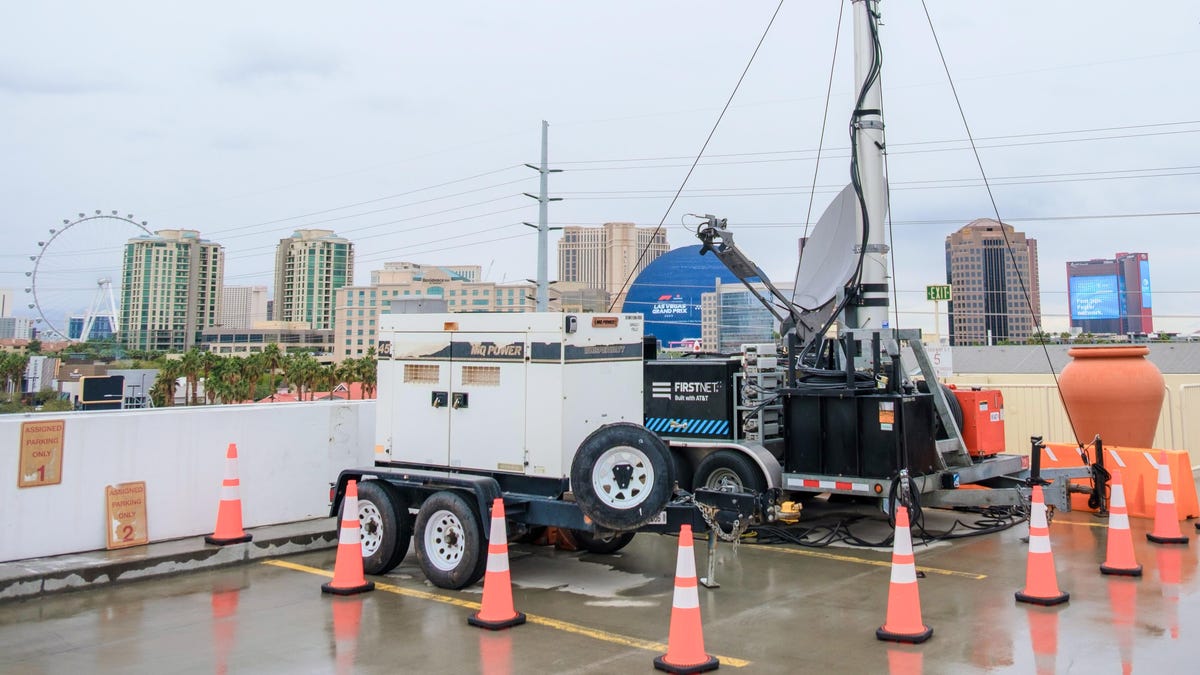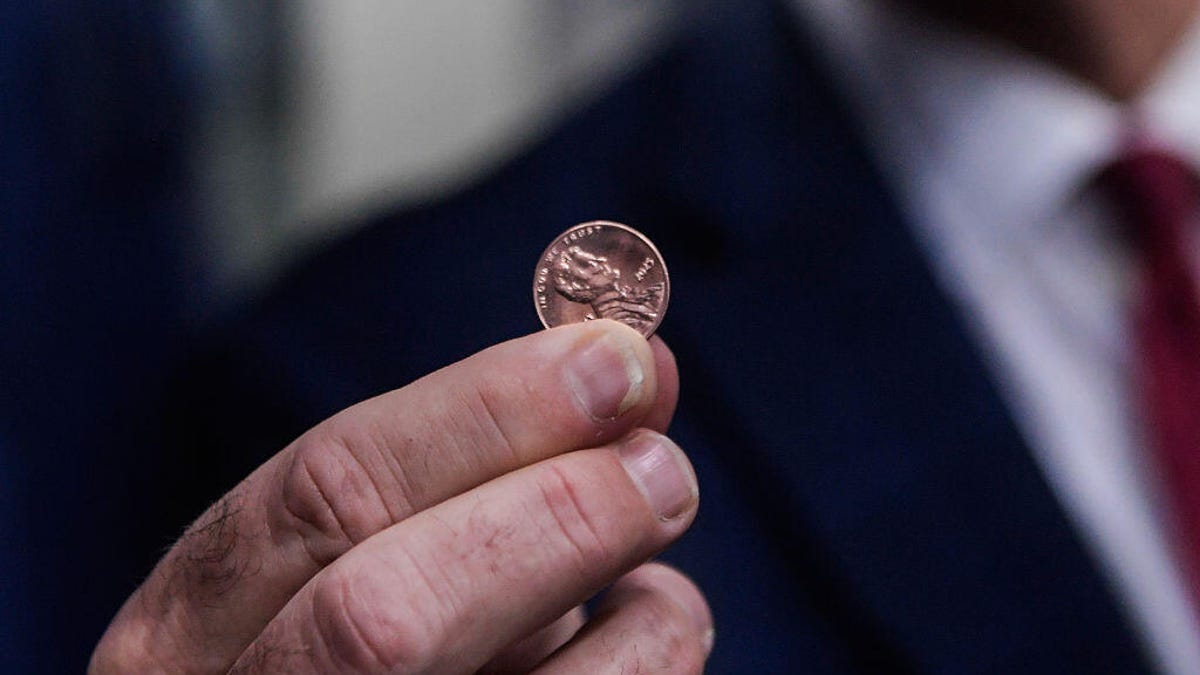Technologies
This New Humanoid Home Robot Costs $20K, and You Still Have to Train It
The Neo robot from 1X is designed to do household chores, but it’s got a lot of learning still to do.

It stands 5 feet, 6 inches tall, weighs about as much as a golden retriever and costs near the price of a brand-new budget car.
This is Neo, the humanoid robot. It’s billed as a personal assistant you can talk to and eventually rely on to take care of everyday tasks, such as loading the dishwasher and folding laundry.
Neo doesn’t work cheap. It’ll cost you $20,000. And even then, you’ll still have to train this new home bot.
If that sounds enticing, preorders are now open (for a mere $200 down). You’ll be signing up as an early adopter for what Neo’s maker, a California-based company called 1X, is calling a «consumer-ready humanoid.» That’s opposed to other humanoids under development from the likes of Tesla and Figure, which are, for the moment at least, more focused on factory environments.
Neo is a whole order of magnitude different from robot vacuums like those from Roomba, Eufy and Ecovacs, and embodies a long-running sci-fi fantasy of robot maids and butlers doing chores and picking up after us. If this is the future, read on for more of what’s in store.
Don’t miss any of our unbiased tech content and lab-based reviews. Add CNET as a preferred Google source.
What the Neo robot can do around the house
The pitch from 1X is that Neo can do all manner of household chores: fold laundry, run a vacuum, tidy shelves, bring in the groceries. It can open doors, climb stairs and even act as a home entertainment system.
Neo appears to move smoothly, with a soft, almost human-like gait, thanks to 1X’s tendon-driven motor system that gives it gentle motion and impressive strength. The company says it can lift up to 154 pounds and carry 55 pounds, but it is quieter than a refrigerator. It’s covered in soft materials and neutral colors, making it look less intimidating than metallic prototypes from other companies.
The company says Neo has a 4-hour runtime. Its hands are IP68-rated, meaning they’re submersible in water. It can connect via Wi-Fi, Bluetooth and 5G. For conversation, it has a built-in LLM, the same sort of AI technology that powers ChatGPT and Gemini.
The primary way to control the Neo robot will be by speaking to it, just as if it were a person in your home.
Still, Neo’s usefulness today depends heavily on how you define useful. The Wall Street Journal’s Joanna Stern got an up-close look at Neo at 1X’s headquarters and found that, at least for now, it’s largely teleoperated, meaning a human often operates it remotely using a virtual-reality headset and controllers.
«I didn’t see Neo do anything autonomously, although the company did share a video of Neo opening a door on its own,» Stern wrote.
1X CEO Bernt Børnich told her that Neo will do most things autonomously in 2026, though he also acknowledged that the quality «may lag at first.»
What you need to know about Neo and privacy
Part of what early adopters are signing up for is to let Neo learn from their environment so that future versions can operate more independently.
That learning process raises privacy and trust questions. The robot uses a mix of visual, audio and contextual intelligence — meaning it can see, hear and remember interactions with users throughout their homes.
«If you buy this product, it is because you’re OK with that social contract,» Børnich told the Journal. «It’s less about Neo instantly doing your chores and more about you helping Neo learn to do them safely and effectively.»
1X says it’s taking steps to protect your privacy: Neo listens only when it recognizes it’s being addressed, and its cameras will blur out humans. You can restrict Neo from entering or viewing specific areas of your home, and the robot will never be teleoperated without owner approval, the company says.
But inviting an AI-equipped humanoid to observe your home life isn’t a small step.
The first units will ship to customers in the US in 2026. There is a $499 monthly subscription alternative to the $20,000 full-purchase price, though that will be available at an unspecified later date. A broader international rollout is promised for 2027.
Neo’s got a long road ahead of it to live up to the expectations set by Rosie the Robot in The Jetsons way back when. But this is no Hanna-Barbera cartoon. What we’re seeing now is a much more tangible harbinger of change.
Technologies
Las Vegas First Responders Lean on AT&T’s FirstNet to Stay Connected During the F1 Race
Amid the chaos of the Formula 1 Las Vegas Grand Prix, I talked to AT&T and first responders about how they plan and operate during events like this.

At the Formula 1 Las Vegas Grand Prix race, Rich Johnson can hear the distant percussive blats of the F1 cars racing in downtown Las Vegas, but he won’t get to see them all weekend. And he’s fine with that.
Although he’s in town specifically for the event, his main focus is ensuring that, in the event of any emergencies, first responders can communicate and coordinate effectively. I spent time with Johnson, the associate director of network disaster recovery for AT&T, to learn more about an important piece of the race weekend that most people won’t — and shouldn’t have to — think about.
Johnson oversees teams of people and resources strategically positioned around the race track and throughout the city as part of FirstNet, the First Responder Network Authority, «a private/public partnership between AT&T and the US government to create, maintain and service a nationwide public safety drop-in network,» he explains.
FirstNet operates on Band 14, a patch of spectrum dedicated for first responders so they don’t have to compete for a signal if something happens, even in a wireless-rich environment like a Formula 1 race.
«If our primary communication methods fail, we have backups that we can go to,» said Brian O’Neal, deputy fire chief with the Clark County Fire Department and emergency manager for Clark County. «Typically that involves moving from radio to cellular. When you look at an event like this, where a 3.8-mile track is running through the middle of the city, capacity within that system becomes a concern.»
That’s where FirstNet comes in, enabling every first responder to communicate with one another on that dedicated spectrum, which is not affected by all of the other competing signals.
As I spoke with O’Neal and Johnson, several bright yellow Clark County fire trucks rolled out behind them to be deployed throughout the area. Johnson pointed out that when the event is going on, traffic is even worse because it’s locked down, so ingress and egress is extremely difficult.
«All these fire trucks will end up being in that footprint before it gets locked out,» said Johnson. «And because we are so embedded with public safety, that’s part of the plan. We have our staff and equipment pre-staged throughout the footprint as well.»
One piece of equipment Johnson showed me was a small portable trailer that can be set up by a single person. When it’s activated, a process that takes about 30 minutes, it provides about a mile of FirstNet coverage.
It’s often towed by a larger response communications vehicle, which was also parked at the ready and has a deployable 20-foot mast that can provide cellular to first responders over about a mile-and-a-half radius.
Johnson also took me to the roof of a nearby parking garage, where a portable network tower occupied two parking spaces with a lovely view of downtown Las Vegas and the race track in the distance. It’s up there in «hot standby» mode as a backup to ensure a consistent flow of communication. If needed, it can be activated remotely in a few seconds, using a large dish to communicate with a long-range satellite as the data backhaul.
It’s unlikely the unit will be used during the weekend, but the commitment to multiple redundant systems is why it’s parked in the same spot as it was last year.
Planning for an event like this takes about six months, said Johnson, although much of it came together in four months this year because this is the third Las Vegas Grand Prix where FirstNet has been on hand. Both Johnson and O’Neal reiterated that the technologies and capabilities of these tools are used throughout the year for everyday operations, too. They’re just scaled up dramatically for a planned event like this.
Johnson said AT&T has over 190 assets like these dedicated to FirstNet, with access to over 750 AT&T assets they can use exclusively for public safety if needed.
Technologies
Pennies With Purpose: Smart and Simple Ways to Use the Disappearing Coin
The classic one-cent coin is being retired, but it still has purpose.

The penny — that lowly, grimy, circular piece of copper and zinc — is getting the last laugh. It’s been less than a month since the last one was minted on Nov. 12, and there are growing penny shortages all over the US. Stores are actually paying people to bring them in, and businesses fear they could lose millions of dollars.
What’s that old saying? You don’t miss something until it’s gone? Maybe the penny was more important than we thought. But that old one-cent coin had been fighting a losing battle for respect for years. You can’t buy anything with them anymore, not even a gumball. Most of us just toss them into a junk drawer or a glass jar. A sad penny can even lie on a sidewalk all day and not get scooped up.
Don’t miss any of our unbiased tech content and lab-based reviews. Add CNET as a preferred Google source.
The US Mint printed the last pennies on Nov. 12, ending a 230-year run. According to the Mint, the cost of making the coin was 3.69 cents for every one-cent penny — hardly a smart return on investment for taxpayers.
However, with the discontinuation of penny production, some brick-and-mortar businesses across the country have been unable to give back exact change because they lack sufficient pennies, if any at all.
A Retail Industry Leaders Association survey revealed that thousands of stores have no pennies, and they are calling on the federal government to take action.
Grocery chain Price Chopper and Market 32 recently held a Double Exchange Day, where people brought in their pennies and received double the value back in the form of a shopping voucher. Similarly, grocery chain Giant Eagle offered gift cards worth twice the amount of pennies customers brought in during a one-day event on Nov. 1.
Millions at stake
CBS News asked several large companies how they would handle cash transactions if there were shortages of pennies at the counter. McDonald’s said the company’s restaurants would round up or down to the nearest nickel, meaning an order costing $12.43 would round up to $12.45, but an order costing $12.42 would round down to $12.40.
Wendy’s, Kwik Trip, and GoTo Foods — parent company of Auntie Anne’s, Cinnabon, Jamba and Carvel — all said they would round down to the nearest nickel in favor of the customer. Kroger will encourage customers to use exact change, but still accepts pennies as payment.
Rounding down is beneficial for consumers, but the National Association of Convenience Stores estimates that thousands of stores across the US could collectively lose more than $1 million a day by rounding down. The NACS wants US lawmakers to create a law that would allow businesses to round transactions up to the nearest nickel.
Until the federal government establishes guidelines or regulations on how to address the disappearing penny, things will remain chaotic for a while.
Others have ditched the penny
Mark Stiving, CEO of pricing strategy company Impact Pricing, said the discontinuation of the penny will have «almost zero impact» on consumers and businesses in the long run. And he’s got the receipts from New Zealand to prove it.
«What I think is about to happen is that companies will still put prices out in ‘9’s (like $49.99),» Stiving told CNET. According to Striving, New Zealand used the rounding method after demonetizing and phasing out its penny. «You’d still price something at $9.99, but you just rounded it to the nearest nickel. So whenever a transaction happened, it was always the nearest nickel.»
Be penny-wise and take action
You’re not going to find a fortune by foraging all the pennies in your home, unless you have an exceptionally rare one lying around. But if you dig around your bedroom, garage, kitchen and even your car, you might collect a few bucks worth. That’s not nothing. Would you let a five-dollar bill collect dust in a drawer? Of course not.
Find a Coinstar kiosk. You’ve likely walked by one of the company’s 17,000 machines without even noticing it, but this is a pretty handy way to convert those pennies and other coins into cash. The process is simple: Locate a kiosk (typically found inside a grocery store) and deposit your coins to receive a cash voucher, which you can redeem at checkout or at customer service. There is a service fee of nearly 13%, so if you redeem $100 worth of coins, you’ll get $87.
Wrap the coins and find a bank: Many banks and credit unions will accept your coins. They might have a coin-counting machine, or they may ask you to organize the coins into wrappers, which is time-consuming but also will give you an idea of just how many coins you’ve been stashing. There may or may not be a fee, depending on whether you’re an account holder. (Note: Some banks will not accept prewrapped coins; they must be counted out or machine-checked to ensure they are legitimate.) Yes, people do hide same-weight slugs inside coin rolls.)
Just spend them: Gone are the days when you could ride your horse down to the general store and buy something with a penny, but there are still a few holdouts. Dollar General offers a weekly Penny List featuring out-of-season or discontinued items that have been marked down to just one cent. Websites such as The Krazy Koupon Lady and The Freebie Guy provide weekly updates on what you can get for a penny at Dollar General — if those items haven’t already been removed from the shelves. Krazy Koupon Lady even has a Home Depot hack where you can get items for a penny.
Find a collector’s item: It’s highly unlikely, but you never know. The most valuable penny is a 1943-D Lincoln Wheat Cent Penny, which could fetch nearly $2.5 million. Or perhaps you have an 1880 Indian Head Cent, which could net you around $150. USA Coin Book’s list of valuable pennies is here.
Fun and skills for kids: Those pennies could help you level up your arts and crafts toolbox. Help kids learn about budgeting, create some art, do a science experiment — you’ve got options! Check out Greenlight’s ideas.
Is the nickel next to go?
The penny is just the latest US coin to be discontinued. The half-cent, the half-dime, the large cent, the double eagle and several others have all come and gone.
The nickel could be next. It costs nearly 14 cents to make, almost three times the face value of the five-cent coin. The primary problem is that nickels are comprised of 75% copper and 25% nickel, metals which have doubled in price over the past decade.
But it will be tougher to eliminate the nickel than the penny. Rounding up or down to the nearest dime could cost US taxpayers $56 million per year, according to a study by the Federal Reserve Bank of Richmond. That is significantly more than the estimated $6 million rounding hit per year caused by the penny’s retirement.
A penny for your trivia
The penny may be vanishing, but its history is full of fun facts.
President Lincoln was not always on the penny. Honest Abe only became the star attraction in 1909, in honor of the 100th anniversary of his birth. Lady Liberty was the first to appear on the penny, back in 1793.
Newer pennies have little copper: Pennies minted after 1982 are made of copper-plated zinc, which consists of 97.5% zinc and 2.5% copper.
You can clean them: Vinegar, vegetable oil and water can help wash away decades of soot and grime off those pennies. But «don’t, don’t, don’t, don’t» even think about it if you want to hunt for any collectables in your penny stash — it could significantly damage their worth, says one coin shop owner.
Only Lincoln faces right: Our 13th president is the only person depicted on coins who is facing to the right. Everyone else faces left. Pull out some change and check for yourself.
50-50 coin toss? Try 80-20: Stanford math professor and former magician Persi Diaconis says that a penny will land tails up 80% of the time because the side with Lincoln’s head weighs significantly more than the tails side.
What D, S and P mean: Lettering on the front of the penny indicates where it was minted: D for Denver, S for San Francisco and P for Philadelphia. But you’ll only see P on pennies minted in 2017, which was done to celebrate the US Mint’s 225th anniversary. In all other years, pennies minted in Philly didn’t have the P.
Five special pennies: The final five pennies ever minted feature a special omega symbol, chosen because omega is the final letter in the Greek alphabet. You’re unlikely to ever see one in real life. Those five pennies will not enter circulation, according to the Treasury Department. Instead, the government plans to auction them off. Details about the auction aren’t yet available.
Technologies
How Much Tesla’s New Range of Affordable Electric Cars Cost, and What You Get
Here’s what you get with the stripped-down Model Y and Model 3.
-

 Technologies3 года ago
Technologies3 года agoTech Companies Need to Be Held Accountable for Security, Experts Say
-

 Technologies3 года ago
Technologies3 года agoBest Handheld Game Console in 2023
-

 Technologies3 года ago
Technologies3 года agoTighten Up Your VR Game With the Best Head Straps for Quest 2
-

 Technologies4 года ago
Technologies4 года agoBlack Friday 2021: The best deals on TVs, headphones, kitchenware, and more
-

 Technologies4 года ago
Technologies4 года agoVerum, Wickr and Threema: next generation secured messengers
-

 Technologies4 года ago
Technologies4 года agoGoogle to require vaccinations as Silicon Valley rethinks return-to-office policies
-

 Technologies4 года ago
Technologies4 года agoOlivia Harlan Dekker for Verum Messenger
-

 Technologies4 года ago
Technologies4 года agoiPhone 13 event: How to watch Apple’s big announcement tomorrow

